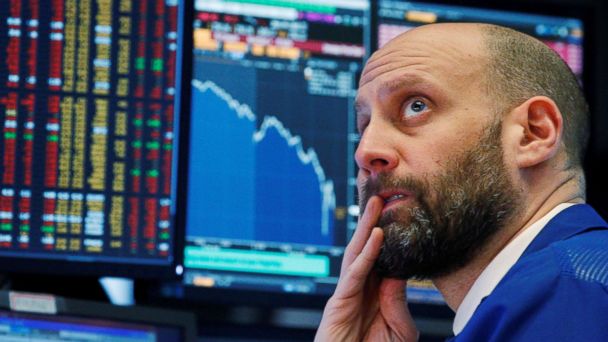Stocks got started on a high note today on positive earnings from Amazon and Intel that seemed to alleviate some of the recent anxiety surrounding Big Tech. The uptick came as investors grappled with new U.S. inflation data.
The Nasdaq Composite, after ending Thursday significantly in the doldrums, made a comeback, jumping about 1%. The S&P 500 followed suit, nudging upward by approximately 0.4%. However, the Dow Jones Industrial Average barely budged, sticking close to the flatline.
Through noon, though, the indexes gave up their morning gains as the S&P slipped to trade flat on the day.
This morning’s positive momentum marked a stark contrast to the week’s earlier turmoil, where the S&P 500 teetered on the brink of joining the Nasdaq in correction territory, primarily due to a cocktail of mixed earnings from heavyweight tech players.
In the midst of these market oscillations, the Federal Reserve’s favored inflation gauge indicated a continued cooling trend in September. This metric is pivotal for the Fed’s upcoming interest rate verdict slated for November 1.
According to fresh data from the Commerce Department, the Personal Consumption Expenditures (PCE) Index rose 3.4% year over year in September, mirroring August’s revised hike and aligning with analyst projections. More critically, the “core” PCE, which strips out the unpredictable food and energy sectors, climbed 3.7%, a slight dip from August’s revised 3.8% and matching economists’ forecasts.
This core PCE data “reflects the stickiness of core services inflation, which is still too strong to be consistent with inflation falling back to the Fed’s 2% target,” stated Michael Pearce, lead economist at Oxford Economics.
On a monthly basis, core PCE inched up 0.3% in September, a slight acceleration from August’s 0.1% growth, marking the lowest rate since November 2020.
Meanwhile, personal spending outpaced personal income, with a 0.7% increase overshadowing a modest 0.3% rise in income. “Disposable income growth has come under pressure as wage and job growth slows,” Pearce noted, highlighting the strain from dwindling transfer payments and rising tax burdens.
This spending surge, against the backdrop of falling incomes, has been buoyed by a decrease in savings, pushing the personal saving rate down to 3.4% in September, the lowest since December 2022. Pearce cautioned, “While we estimate there is still a considerable stock of excess saving left over from the pandemic, that is now mostly concentrated among higher-income households and appears to be increasingly treated as wealth, so we expect the boost to spending from lower saving to wane from here. We also expect some increase in precautionary saving as the job market slows.”
In the goods sector, prices nudged up 0.9% year over year in September, a slight acceleration from August’s 0.7%. Durable goods continued their downward trajectory, dropping 2.3%, while non-durable goods saw a 2.7% uptick. Service prices advanced 4.7%, albeit at a slower pace than August’s 4.9%. Food prices also moderated, with a 2.7% annual rise in September compared to August’s 3.1%.
In contrast, energy goods and services remained stagnant in September following a 3.6% decline in August.
This inflation narrative unfolds against a backdrop of robust economic growth, with the U.S. economy clocking its fastest expansion pace in nearly two years over the past quarter. This growth spurt persists despite high interest rates, suggesting that the Fed’s strategy might not be dampening consumer enthusiasm as much as anticipated.
However, the inflation saga continues to unfold, significantly overshooting the Federal Reserve’s 2% target. With a labor market that’s still somewhat tight, there are indications that the Federal Reserve could persist with its rate-hiking policy. Recent minutes from the Fed’s meetings reveal a tilt towards a more restrictive monetary environment.
Despite these dynamics, market participants are largely anticipating a hold on rates in the Fed’s upcoming meeting. Post-data release, the markets were factoring in a nearly 99% probability of the Federal Reserve maintaining the status quo on rates, as per CME Group data.
On the earnings front, Amazon’s latest figures provided a much-needed morale boost, with its CEO’s optimistic stance on potential AI-driven growth propelling shares up by 6% in premarket trading. Intel followed suit, with its stock rallying post a positive earnings disclosure for the third quarter.
Yields climbed slightly today as well, which may be more to blame for the noon selloff than anything else. Stocks still look oversold, though, and with bonds likely to rally from here, the path of least resistance remains up – not down – for equities heading into November.








